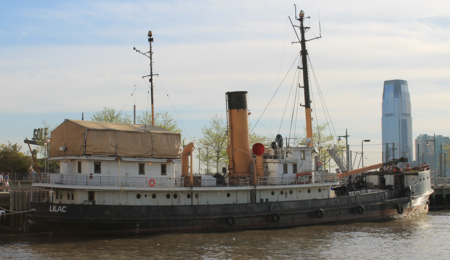USCGC Lilac (WAGL-227)
1933 shipsManhattan Registered Historic Place stubsManhattan building and structure stubsMuseum ships in New York (state)Ships of the United States Coast Guard ... and 2 more
Ships on the National Register of Historic Places in ManhattanUnited States naval ship stubs

The USCGC Lilac (WAGL/WLM-227) is a former Coast Guard lighthouse tender located in New York City. The Lilac is America's only surviving steam-powered lighthouse tender. It was built in 1933 at the Pusey & Jones Shipyard in Wilmington, Delaware. In the 1950s she assisted several ships that collided. Decommissioned in 1972, she was donated to the Harry Lundeburg Seamanship School of Seafarers International Union. She was added to the National Register of Historic Places on January 7, 2005. She is a museum ship, docked at Pier 25, near North Moore Street in Manhattan. In 2016, she appeared in two episodes of the Netflix series, Daredevil.
Excerpt from the Wikipedia article USCGC Lilac (WAGL-227) (License: CC BY-SA 3.0, Authors, Images).USCGC Lilac (WAGL-227)
New York Manhattan
Geographical coordinates (GPS) Address Nearby Places Show on map
Geographical coordinates (GPS)
| Latitude | Longitude |
|---|---|
| N 40.732777777778 ° | E -74.012777777778 ° |
Address
New York, Manhattan
New York, United States
Open on Google Maps








